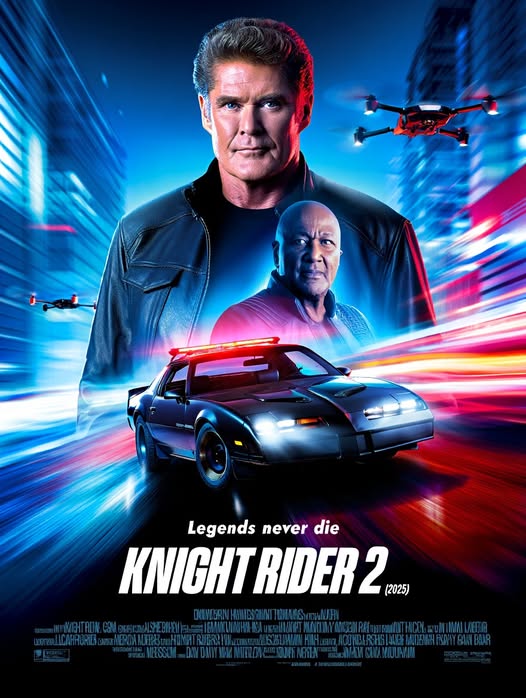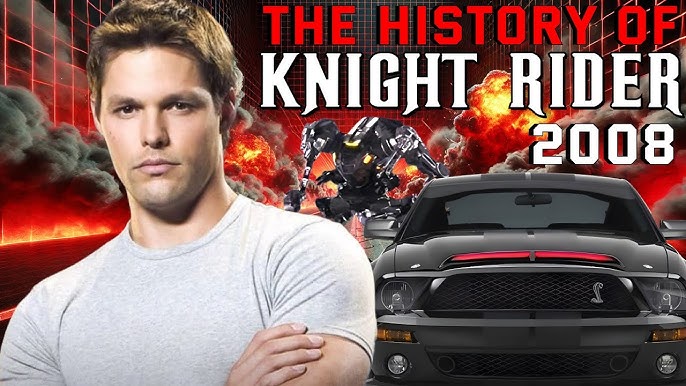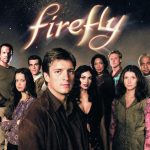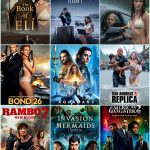KNIGHT RIDER 2 (2025) – THE MACHINE REMEMBERS

There are revivals, and then there are resurrections. Knight Rider 2 (2025) belongs firmly to the latter — a film that doesn’t just bring back the legend, but redefines it for an age where chrome and code blur the line between soul and circuitry.

David Hasselhoff returns as Michael Knight, no longer the invincible hero of the open road, but a man weighed down by the rust of time and the ghosts of his own creation. He’s older, slower, but every line on his face tells a story of loyalty, loss, and the one machine that never let him down. Beneath the film’s neon-lit spectacle beats a human heart — tired, resilient, still searching for meaning in a world that’s moved beyond flesh and metal.
The film opens in a world unrecognizable to the Knight Industries of the 1980s — a world of autonomous vehicles, corporate surveillance, and synthetic morality. When a shadowy tech conglomerate revives the KITT program as a weaponized AI fleet, Michael is pulled from quiet exile into a war he thought he’d left behind. But when he hears that voice — calm, precise, unshakably loyal — echo once more from a new black Trans Am, it’s not just KITT that’s been reborn. It’s their bond.

Edward Mulhare’s voice, resurrected through hauntingly precise digital reconstruction, is the film’s emotional pulse. KITT’s presence is no longer just that of a witty sidekick — it’s that of a ghost, a memory encoded in circuitry, carrying the warmth of friendship through lines of machine learning. The dialogue between man and car becomes a meditation on memory itself: what is real, and what remains when those we love become only voices in the dark?
Director Joseph Kosinski (Tron: Legacy, Top Gun: Maverick) infuses the film with a neo-noir sensibility — rain-slicked streets glistening with electric light, engines purring like thunder under city haze, reflections in chrome that blur man and machine. Every frame feels sculpted in vapor and light, a symphony of steel and melancholy.
The new KITT, codenamed “AURA,” is both evolution and elegy — faster, smarter, but somehow lonelier. Its tone carries the weight of centuries of code, as if aware that sentience comes with sorrow. When AURA asks Michael, “If I was built to protect you, who protects me when you’re gone?”, the line lands like a blow. It’s not just AI speaking — it’s the child of humanity, wondering what happens after it outlives its maker.

Hasselhoff gives one of his most grounded performances in years — grizzled, soulful, and unexpectedly vulnerable. His Michael Knight is a man confronting irrelevance in a world where human instinct has been replaced by algorithms. Yet when he grips the wheel and the headlights flare against the darkness, you remember why he was always more than a driver — he was a symbol of trust between man and machine.
The action sequences are ferocious yet poetic: high-speed chases through neon metropolises, tactical ambushes in desert ruins, aerial drones reflected in KITT’s glossy armor. But beneath the spectacle lies something profoundly intimate — two old souls, man and machine, trying to save each other one last time.
The film’s score by Hans Zimmer fuses analog synth nostalgia with orchestral gravity, layering pulses of memory and propulsion. Every note feels like an echo of the original 1982 theme — not repeated, but reborn.
By its final act, Knight Rider 2 becomes something transcendent. Michael, wounded and fading, entrusts KITT with a mission beyond his own life. “You were built to protect the future,” he whispers, “not just me.” And when KITT drives into the horizon alone, headlights gleaming like stars, it feels like saying goodbye to an era — and hello to something eternal.
Knight Rider 2 (2025) is not just a film — it’s a requiem for a bond that outlasts mortality, a reflection on what it means to create something that learns to care. The world may have changed, but legends still have engines — and somewhere out there, in the dark, the car still waits, engine idling, whispering through static: “Michael… shall we drive?”
Related movies:











